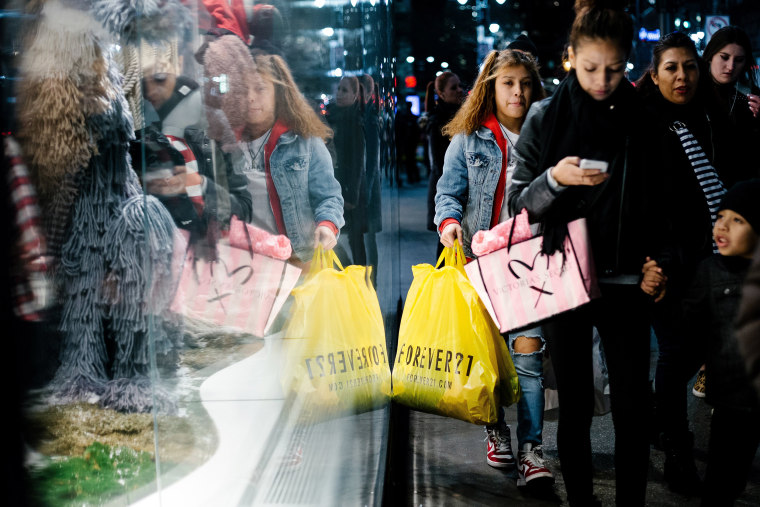The recent bankruptcy filing by American icon Sears after 125 years in business sent a shudder through the retail sector. But does it mark the end of old-fashioned stores where shoppers can browse? Not at all. Consumer habits are changing, but one that hasn't is the interest in going to an actual store.
E-commerce sales have steadily climbed since the Census Bureau began tracking them in 1999. But the latest figures from early in 2018 show that online purchasing is still only about 10 percent of all retail.
More than two-thirds of adult consumers said they either tended to shop more in stores or equally online and in stores, according to a Morning Consult poll of the 2017 holiday season. Only 24 percent tended to shop more online. Even for adult consumers ages 18-29, just 26 percent used e-commerce more.
And when it comes to holiday buying, the emphasis is still on the store, with Black Friday winning out over Cyber Monday. Even among young adults, 58 percent preferred stores right after Thanksgiving, while 42 percent favored going online for the relatively new e-commerce event. In fact, it was people 45 and older who would rather shop on Cyber Monday than Black Friday.
As Kelli Hollinger, director of the Center for Retailing Studies at Texas A&M, told Morning Consult, "[Holiday shopping is] about choosing something that expresses your love for friends, family, or teachers. And that’s why many people will still venture to stores to personally choose the right gift."
Even the oft-maligned mall is still alive, according to D.A. Davidson senior research analyst John Morris. In a September research update, he noted "store rents holding firm in most top-tier malls" because the locations let brands create destinations for consumers.
The industry has noticed, and responded in kind. A 2018 study from the National Retail Federation and market analyst firm Forrester showed more retailers were planning to open rather than close stores in 2018. The worlds of online and physical retail are interdependent and need each other.
"Products ordered online are increasingly picked up in-store or shipped from a nearby store, and digital technology being used at brick-and-mortar locations lets retailers help customers find what they want or make the sale, even if the product is out of stock," said Mark Matthews, NRF Vice President for Research Development and Industry Analysis.
Even some big online names have found that they need to have a physical presence. Amazon is the biggest example, with its acquisition of Whole Foods. In addition to high-priced groceries, the locations also have lock boxes where Amazon shoppers can pick up their purchases.
But Amazon also has more than 100 physical book stores and pop-up locations across 22 states and the District of Columbia. That doesn't count the checkout-free Amazon Go food stores. At the end of 2017, Amazon operated more than 20 million square-feet of retail space in the U.S. and another 202,000 in the rest of the world.
Online eyewear brand Warby Parker has 87 locations between the U.S. and Canada, and luxury home goods and bedding seller Boll & Branch has experimented with temporary pop-up stores — and plans to launch multiple permanent stores within the next two years.
So, yes, physical stores do still exist, and will do so for as long as people want to shop — and retailers want to profit.
